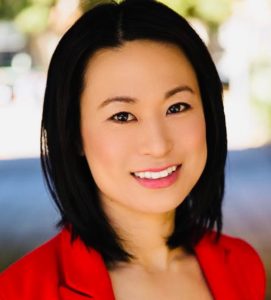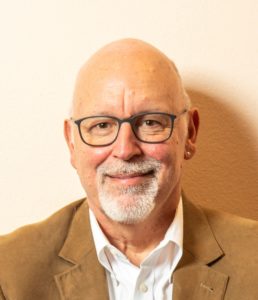sponsored content
August 15, 2022
By Monica Jong, PhD, BOptom; Noel A. Brennan, MScOptom, PhD, FAAO; Alex Nixon, OD, MS, FAAO; Mark A. Bullimore, MCOptom, PhD, FAAO; Xu Cheng, MD, PhD, MBA, FAAO; and Wright Shamp, PhD

Johnson & Johnson Vision is committed to changing the trajectory of myopia by shaping the standard of care. Our commitment is to lead by science and to generate evidence that can help practitioners provide the best patient care through improved technology and a portfolio of treatments.
Johnson & Johnson had a strong presence at the Association for Research in Vision and Ophthalmology (ARVO) 2022 meeting held recently in Denver, Colorado, with fifteen presentations. A number of our experts presented exciting new research at this meeting, some of which was selected by the ARVO committee as a hot topic and recognized by Review of Myopia Management as among the most “noteworthy myopia-related posters and papers.”
The ARVO meeting is the largest face-to-face global vision and ophthalmology meeting and typically attracts up to 10,000 attendees from all over the world from the leading research and medical institutions representing all fields of vision research, ophthalmology, and optometry. It is a place for sharing cutting-edge vision research and supporting collaboration.
Below we summarize some of the most exciting research coming out of Johnson & Johnson in myopia presented at the ARVO 2022 meeting.
Ratio of Refractive Error Change to Axial Elongation in Young Myopes
Author Block: Alex Nixon,1 Wright Shamp,1 Elizabeth Maynes,1 Xu Cheng,1 Mark Bullimore,2 Noel Brennan1
1Johnson & Johnson Vision; 2University of Houston College of Optometry
https://arvo2022.arvo.org/meetings/virtual/poster/hteGumzmFhqsknj6p
With increasing use of axial length to monitor myopia progression, the ratio of refractive error (RE) change to axial elongation (AE) has important clinical implications. We conducted a systematic review and meta-analysis, identifying 67 applicable studies used to create a weighted multivariable mixed model of the ratio for untreated myopic children. The overall weighted mean ratio was 2.04 [95% CI: 1.96, 2.12] D/mm, and neither age nor race were significant covariates. This sets a benchmark for clinical expectations in myopic children and is lower than had been assumed, which may be a result of lens compensation observed in younger children or a decreased ratio, anticipated from optical calculations, in longer eyes of older children. Interpretation should consider limitations of using aggregated rather than individual subject data.
Design Concepts for a Myopia Control Soft Contact Lens
Author Block: Noel Brennan,1 Michael Collins,2 Xu Cheng1
1Johnson & Johnson Vision; 2Queensland University of Technology
https://iovs.arvojournals.org/article.aspx?articleid=2782346
This is the first optical characterization of vision compromise versus myopia control efficacy with dual focus lenses to our knowledge. Through an extensive research program characterizing efficacy and visual quality with myopia control soft contact lenses, we learned that efficacy is related to the local power in the treatment zone rather than coaxial focal power and that the optical method by which treatment is delivered can have major impact on vision quality. Efficacy of typical soft contact lenses for controlling progression of nearsightedness is limited because adding plus power leads to vision compromise. We describe the basis of this effect and a novel method of getting around this problem so that the amount of plus power added is no longer limited by the impact on vision.
Final Level of Myopia versus Age of Onset: Effect of Race and Age at Final Refraction
Mark Bullimore,1 Noel Brennan2
1University of Houston; 2Johnson & Johnson Vision
https://iovs.arvojournals.org/article.aspx?articleid=2782065
By systematic review of nine studies, we observed that the final level of myopia can be estimated reasonably well according to the age of myopia onset. Delaying onset by one year in a young Asian subject can be equivalent to some three years of treatment in reducing final degree of myopia. As Benjamin Franklin said, “An ounce of prevention is worth a pound of cure.”
Influence of Age and Race on Axial Elongation in Myopic Children
Wright Shamp,1 Noel Brennan,1 Mark Bullimore,1 Xu Cheng,1 Elizabeth Maynes1
1Johnson & Johnson Vision
https://iovs.arvojournals.org/article.aspx?articleid=2782714
With increasing interest in slowing myopia progression, and the importance of axial length measurement, normative data for axial elongation in myopic children should provide a valuable clinical reference. We conducted a weighted random effects meta-analysis to model axial elongation in myopic children with emphasis on the influence of age and race. Mean axial elongation decreases 15% per year as age increases (95%CI: 11.4%-18.5%, P <0.0001) and is 28% greater in Asian children (95%CI: 7.6%-52.2%, P <0.01) compared to non-Asians. This analysis sets benchmark values and estimates of the spread of axial elongation for monitoring myopia progression and treatment efficacy.
The Role of Myopia in 2020 Uncorrectable Global Visual Impairment
Monica Jong,1 Noel A. Brennan,1 Mark A. Bullimore2
1Johnson & Johnson Vision; 2University of Houston
https://iovs.arvojournals.org/article.aspx?articleid=2779141
Combining the age distribution of the global population in 2020 and the Holden et al. (2016) estimate of myopia prevalence of 33.9% with the distribution of myopia severity from Brennan et al. (2020) and cumulative risk of vision impairment, we calculated that 29% (32 million) of the global uncorrectable vision impairment is due to myopia and associated diseases such as glaucoma, cataract, retinal detachment, and myopic macular degeneration. In our 2020 model, each 1% increase in myopia prevalence results in an additional 1.2 million with vision impairment. Projecting for 2050, each 1% increase in myopia is predicted to be associated with 2.7 million increased vision impairment. Comprehensive eye care programs and services will likely be needed to reduce myopia prevalence and severity, as well as treat diseases associated with myopia to reduce vision impairment.
Evaluating Accommodative Response of Eyes Wearing Soft Contact Lenses for Myopia Control
Xu Cheng,1 Pete Kollbaum,2 Raman Prasad Sah,2 Dawn Meyer,2 Mona Almaghshi,3,1 Jing Xu,4,1 Noel Brennan1
1Johnson & Johnson Vision; 2Indiana University; 3Maxis IT Inc; 4University of North Florida
https://iovs.arvojournals.org/article.aspx?articleid=2782479
Accommodation of the eye in response to multifocality of a lens may affect the myopia control efficacy of the lens. A soft contact lens (SCL) with the RingBoost technology (RB) was designed to maximize myopia control effect without affecting normal accommodation of the eye. This randomized, controlled, double-masked study of 10 young adults examined the accommodative response under four target vergences of the RingBoost, dual-focus, and a center-distance multifocal soft contact lens versus a single-vision soft contact lens and spherical spectacle lens corrections. Four analytical methods that were either refraction- or wavefront-based were utilized to determine accommodative response. The study demonstrated that across all metrics, the RB lens had similar or better accommodative performance than single-vision corrections.
Impact of Zone Geometry on the Introduction of Myopic Defocus in Young Eyes Wearing Multizone Lenses
Raman Prasad Sah, B. Optom.,1 Xu Cheng, MD, PhD, FAAO,2 Dawn Meyer Schneider, OD,1 Noel Brennan, BScOptom, MScOptom, PhD, FAAO,2 Pete Kollbaum, OD, PhD, FAAO
1Indiana University; 2Johnson & Johnson Vision Care, Inc.
https://iovs.arvojournals.org/article.aspx?articleid=2782778
Multizone soft contact lenses (SCL) have been shown to be effective to control myopia progression in young eyes and is thought to be due to myopic defocus. This project investigated the myopic defocus introduced and how this varied as a function of lens geometry utilizing a novel analytical method. In the same study described above, “eye plus lens” defocus of 10 young adults was examined based on wavefront aberrations measured under natural pupils with a Shack-Hartmann aberrometer. Percentage of the pupil that contained myopic defocused light for each of the four soft contact lenses: single vision (SV), dual-focus (DF), center-distance multifocal (MF), and a new soft contact lens with the RingBoost technology (RB). The study showed that multizone lenses introduced significant amounts of myopic defocus at all target vergences. However, magnitude and proportion of myopic defocus was influenced by the lens zone geometry and changes in pupil sizes. The RB lens retained relatively higher levels of myopic defocus at near viewing.
 |
Dr. Monica Jong, PhD, BOptom Global Director of Professional Education — Myopia, Johnson and Johnson Vision; Honorary Fellow, School of Optometry and Vision Science, UNSW, Sydney, Australia. Dr. Monica Jong is the Global Director of Professional Education, Myopia at Johnson & Johnson Vision, where she leads practitioner education initiatives around the world to support evidence-based myopia management. She was the former Executive Director of the International Myopia Institute, an organization she helped found and lead. In this role she led the development of white papers and key initiatives to bring consensus to the field of myopia management by bringing together leading researchers, clinicians, educators, policy-makers, and public health experts. Dr. Jong has published numerous peer-reviewed articles, co-created the first global online education program in myopia at the Brien Holden Vision Institute, and co-authored the WHO report on the Impact of Myopia and High Myopia. She was the former secretary of the Refractive Error Working group of the International Agency for Prevention of Blindness (IAPB) and contributed to position papers and advocacy initiatives in uncorrected refractive error. She has supervised a number of graduate students and speaks regularly at scientific and practitioner meetings in myopia and refractive error. |
 |
Noel A. Brennan, MScOptom, PhD, FAAO, Clinical Research Fellow, Johnson & Johnson Vision. Dr. Noel A. Brennan is an internationally recognized researcher and educator. He has led an extensive global scientific program studying myopia epidemiology, metrics of treatment efficacy, and groundbreaking optical designs of contact lenses. This work has resulted in excess of 100 patents, original manuscripts, and conference presentations over the last decade. |
 |
Alex Nixon, OD, MS, FAAO, Principal Research Optometrist, Johnson & Johnson Vision. Dr. Alex Nixon is a skilled clinician, educator, and researcher. He was formerly a clinical instructor at The Ohio State University College of Optometry and a member of the Bifocal Lenses In Nearsighted Kids (BLINK) Study Group. As Principal Research Optometrist at Johnson and Johnson Vision, he leads clinical research and the development of patient-reported outcome measures. He continues to teach, when possible, and he was a co-author for Managing Myopia: A Clinical Response to the Growing Epidemic, a document intended to provide guidance for eye care practitioners in the management of myopia in clinical practice. |
 |
Mark A. Bullimore, MCOptom, PhD, FAAO Adjunct Professor, University of Houston, College of Optometry. Professor Mark A. Bullimore is an internationally renowned scientist, speaker, and educator based in Boulder, Colorado. He received his Optometry degree and PhD in Vision Science from Aston University in Birmingham, England. He spent most of his career at the Ohio State University and the University of California at Berkeley and is now Adjunct Professor at the University of Houston. He is the former Editor of Optometry and Vision Science. His expertise in myopia, contact lenses, low vision, presbyopia, and refractive surgery means that he is consultant for a number of ophthalmic, surgical, and pharmaceutical companies. This work has resulted in approval of, among others, Paragon CRT, Alcon’s iLux, and CooperVision’s MiSight lens. He has co-authored over 100 peer-reviewed scientific articles including several modern classics in the field of myopia control. |
 |
Xu Cheng, MD, PhD, MBA, FAAO Clinical Research Fellow, Clinical Science, Johnson & Johnson Vision. Dr. Xu Cheng is an ophthalmologist and vision scientist with 27 years of experience in Clinical and Vision Science research. She is the clinical lead for multiple contact lens R&D projects with emphases in myopia control, visual optics, and development of clinical testing methodologies. She has designed and executed more than 100 clinical investigations ranging from early feasibility studies for proof of concept to confirmatory pivotal clinical trials, including more than 30 myopia-control-related clinical studies involving 2,000+ pediatric subjects. Dr. Cheng is globally recognized for her expertise in clinical and vision research with 100+ peer-reviewed publications, conference presentations, and patents. |
 |
Wright Shamp, PhD, received his doctoral degree in Statistics from Florida State University. He currently works for Johnson & Johnson Surgical Vision as a Biostatistician. |
PP2022ABLM4205













